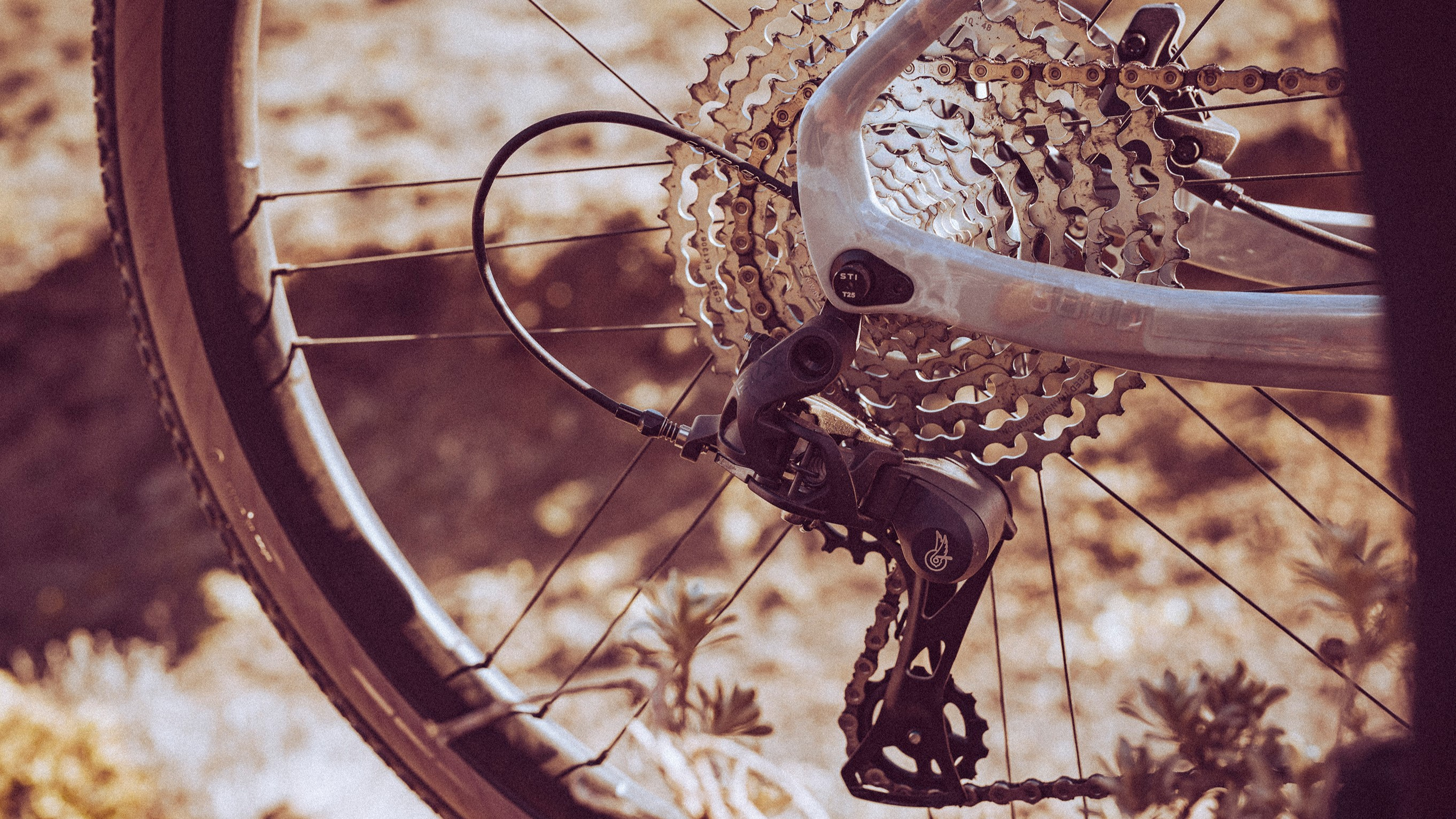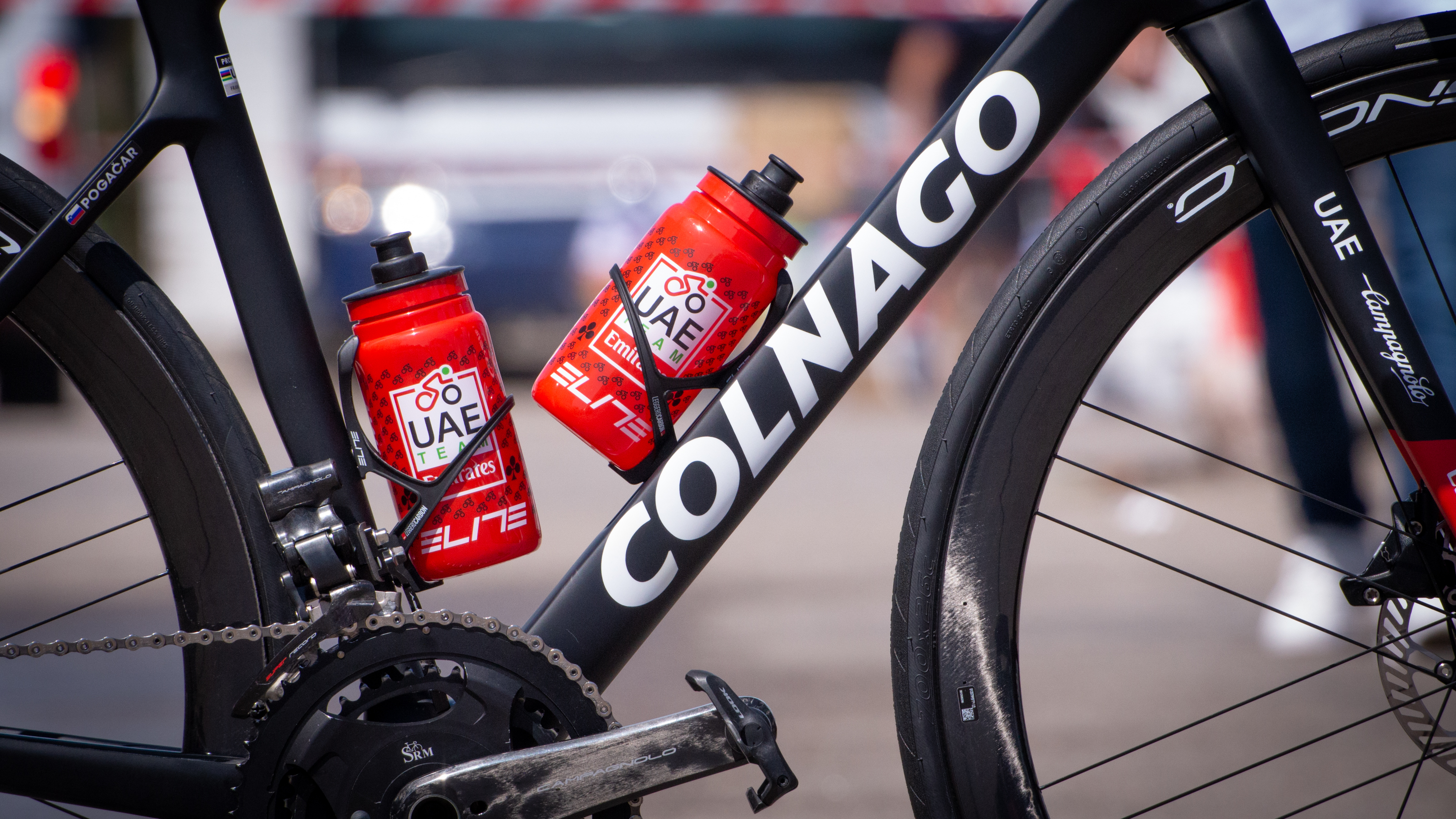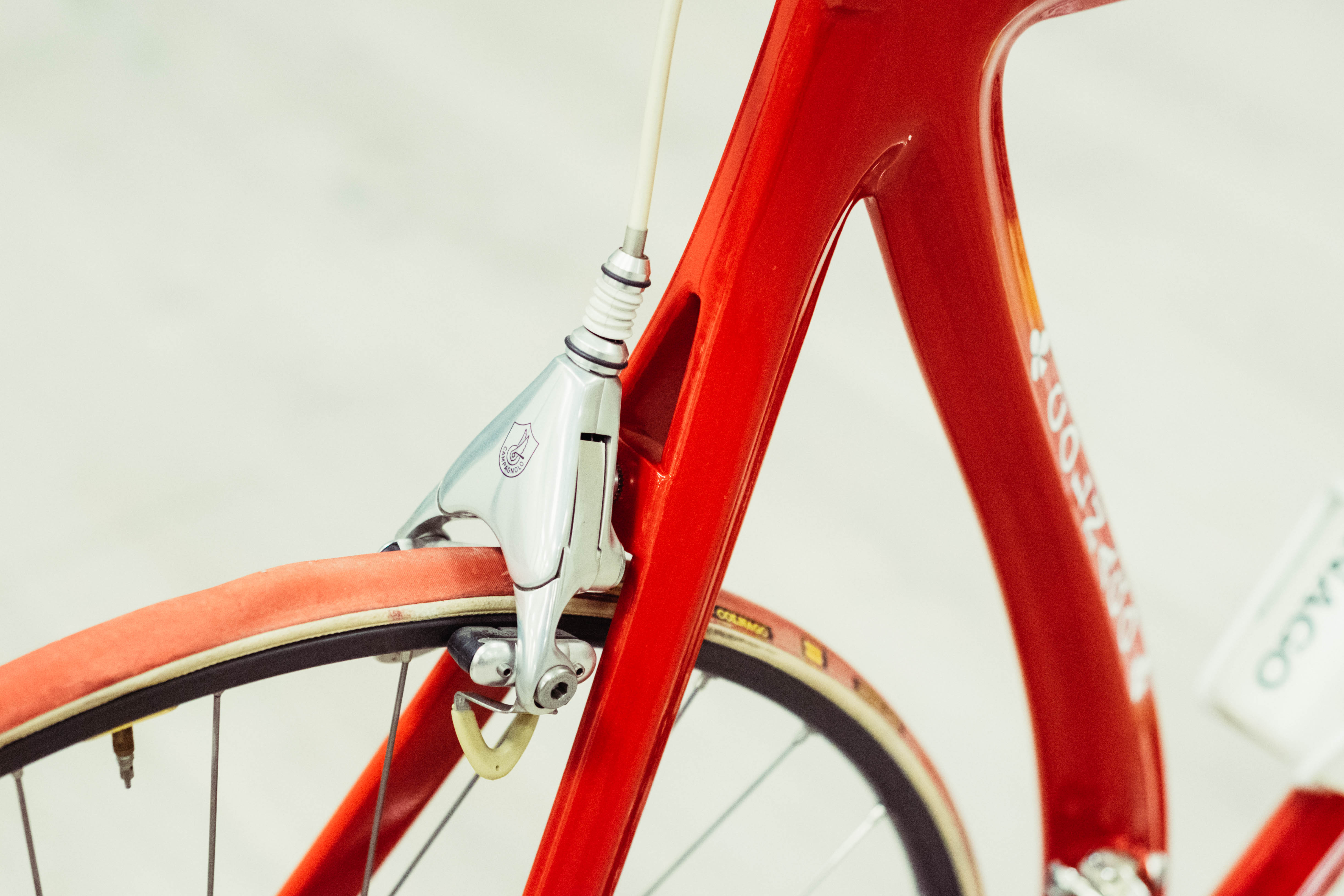
With the launch of a new Ekar groupset from Campagnolo, a €1,500, alloy, cable-actuated set, it yet again has me wondering where the brand is heading. The general direction for Campagnolo has been erratic in recent years. There is now no WorldTour presence for what was once the most storied component brand out there, and besides this new Ekar (the affordability of which is up for debate), the lion’s share of new releases from the Italian componentry brand have been at the very high end.
In the words of Davide Campagnolo, grandson of founder Tullio, it’s aiming to become a ‘sports luxury’ brand, which is fine as a business model, but to my mind it makes a lot more sense for Gucci, where couture items on the catwalk sell belts and handbags on the high street, than it does for bicycle components.

The new Ekar confuses me
If you’re in the market for a fresh gravel groupset, why would you spend €1,500 on this new version of Ekar, when you could spend €200 less and get SRAM Apex XPLR. For €200 less you’re getting wireless shifting and a power meter. What are you sacrificing? Ekar comes with a wider range of chainring options, sure, but SRAM cassettes, while only 12sp rather than 13, offer a wider gear range.
Taking the very extremes of large and small chainring possibilities, Ekar can give you 24-105 gear inches, which is admittedly a solid range. Apex XPLR can only offer 25-100, but use the money you save and swap the rear end out for an Eagle setup and you can go as low as 21. You have a slightly lower top-end possibility, but in terms of sheer hill climbing, spinning ability, SRAM takes the cake.
Sure, 13 sprockets gives you more options in a single setup, but if you want more options then Shimano is out there flying the flag for the double, and doing it with aplomb. In my opinion, 2x GRX is still the gold standard for gravel groupsets.
Compared to its competitors it’s a hard sell, but oddly versus the previous carbon version of Ekar, it’s also tricky to justify. Sale prices aren’t representative, but given you can pick up a carbon Ekar groupset for under £900 currently, why would you opt for the heavier setup?

Are we due a new Ekar carbon?
The fact that the original Ekar wasn’t electronic from its inception was noteworthy, but not hair-raising at the time. Now, though, its lack of electronic shifting makes it seem outdated. The fact that the new Ekar is priced similarly to the current offering, combined with the £4,500 price of the new SuperRecord EPS makes me suspect that there is a new Ekar EPS in the pipeline for the near future, priced somewhere in the middle, higher than the current carbon set.
This is further bolstered as a theory by the lack of differentiation between the carbon and alloy Ekar groupsets we have now. The only substantive difference is the material, plus some chainring and cassette options, so there needs to be a bigger point of difference in the range.

Sports luxury and WorldTour presence
Campagnolo used to be the name in race bike componentry. Slowly but surely its presence at the top level of racing has diminished. Last year just a single team, AG2R-Citroen, was running the Italian components, and for 2024 there are none.
Campagnolo itself has spoken about its desire to become a ‘sports luxury’ brand. Luxury brands, the likes of Gucci, Versace, and Prada tend to operate on a clear model of producing unattainable, luxury couture products for the catwalk (in this case, Super Record EPS), which incentivises customers to buy into the brand with lower price point items; a Gucci belt, Prada sunglasses, Armani jeans.
The problem is, cycling isn’t high fashion, and from what I’ve seen of top-end bikes lately, Campagnolo is not the trend du jour.
In one telling example, Colnago recently launched some new colours for its 'Made in Italy' C68 collection, and opted for a full Dura-Ace build for the media shots. Do customers want a ‘luxury’ groupset, or would they prefer to buy into a brand that has a proven record at the top level of racing? The fact that the brand has put seemingly no effort into updating its mid- and low-tier (such as a low-tier Campagnolo groupset exists at all) groupsets such as Centaur and Potenza also feels like the sports luxury thing just isn't working. People can’t buy in at the lower end, even if they wanted to, because the components haven’t kept pace with modern trends.
Maybe it’s the £4.5k price tag for a groupset that makes me think Campagnolo has lost the plot a bit, but it seems needlessly unattainable. I already somewhat loathe when bicycle components are packaged in luxurious ways (could you imagine a timing belt for your engine packaged like an iPhone?), and so maybe it’s simply that Campagnolo isn't for me any more, but it used to be.
No mid-range updates
Gone is Athena, the only Campagnolo groupset I have ever owned. Back then Campagnolo was so desirable that I managed to sell the whole groupset wholesale in under a week to a clubmate before I made the switch to Ultegra. My desire to work on my own bikes as much as possible was flummoxed by needing specific, expensive tools. This is nothing new, but I was fresh out of university, mechanically incompetent, and broke.
Gone, too, is Potenza. Billed as an OEM competitor to Ultegra, it never really gained the necessary traction and has been largely consigned to the big mechanic in the sky. What we are left with now, according to the Campagnolo website, is an eye-watering Super Record Wireless, a still-very-expensive Super Record EPS, and cable-actuated versions of Record, Chorus, and Centaur.
Unlike Shimano and SRAM, Campagnolo has so far been reluctant to trickle its wireless shifting down to lower tiers. It leaves me wondering who these lower groupsets are for. Not having a silver option for at least one of them (though you can still pick them up if you know where to look) for the neo-retro rebuild gang seems a shame, but not a drastic oversight. The only remaining reason I can see to opt for a lower-level Campagnolo groupset now is that you want Italian components. It’s a heart decision, not a head one, to use a wildly stayed cliché.
Another issue is compatibility. The only test bikes I’ve had in my entire time at Cyclingnews that feature Campagnolo have been Italian bikes, and top-spec ones at that. Colnago C68, Basso Diamante and the like. High-end bikes aren’t shipping with Chorus, and if you buy a high-end frameset nowadays, it’s likely only compatible with electronic groupsets, so you couldn’t build a bike yourself. Centaur is still rim brake only, so that rules out most new bikes, and caters only to the “I’ve bought a retro steel DeRosa frame off eBay” crowd.
It’s been eight years since it was updated, too, which makes me suspect it never will be again, meaning parts will become more scarce.

No longer ahead of the curve
Credit where it’s due, Campagnolo was the first to 10, 11, 12, and 13-speed groupsets, but as the years have marched on, the demand for more sprockets seems to be waning. I’m sure at the time people claimed that having more than five sprockets was pointless, but the move from 12 to 13 certainly seems like unnecessary oneupmanship; innovation for innovation’s sake, and it doesn’t seem to be something Shimano or SRAM are clamouring to follow suit on.
The original Ekar was certainly a well-performing option, and the use of a 9T sprocket certainly avoids the use of a giant dinner plate cassette to achieve such a spread of gears, but its lack of electronics feels dated already. At its launch, Shimano and SRAM were already deep into electronic shifting, and the other major releases from the brand in the form of new Hyperon and Bora wheelsets feel a little like window dressing than anything groundbreaking. Other releases like the €2,000 gold corkscrew feel more like a parody than anything else.
The New Bora Ultra WTO wheels do offer a wider internal width than the brand has offered previously, at 23mm, but for a 60mm deep wheel, it makes no specific aero claims. Meanwhile, the 35mm WTO Ultra model remain slightly heavier and narrower than the similar-priced Zipp 353 NSW, which launched almost three years ago in April 2021.
I still get excited seeing a glossy set of Campagnolo wheels, but back in the day the Bora Ultra wheels were desirable not only because they were flash, but also because they featured at the pointy end of racing. Now, like Super Record Wireless, they feel like they are becoming a luxury item simply to show off. With the rest of the industry focussing on wringing out every last watt, it’s novel to see a brand make no specific performance claims, and much as I love premium goodies the brand feels like it's throwing decades of racing heritage aside to chase those riders with incredibly deep pockets.
I think I am being critical now because I am actually a Campagnolo fan. Last year I visited the Colnago factory and was shown into the loft-cum-museum and was genuinely excited to see innumerate Italian classics decked out with Campagnolo groupsets from decades gone by. Delta brakes, skeletal front derailleurs, and even the gaudy gold-plated bits filled me with joy.
Difficult as my own Campagnolo experience was, even early in my cycling career I felt like I was riding something with heritage. With the shift to ever-more-premium offerings that no longer have any racing acumen, it means that experience is denied to less affluent riders, and the attainable luxury and certain je ne sais quoi (yes, I know that’s French) gives way to gauche, brash, and ostentatious.
To use boats as an analogy, to my mind Campagnolo used to be the Riva Aquarama; a beautiful symphony of polished cedar and mahogany, powered inexplicably by two V8 engines, given it was only big enough to carry two people with suitably flowing headscarves. You could look at that and still imagine yourself in one. It’s gorgeous, it’s a little bit daft, it’s iconic. Now, neatly enough, Campagnolo is like the modern offerings that Riva is putting out; fibreglass gin palaces that fit better at the Dubai international boat show than the shores of Lake Garda.
I think it’s important to end on a note of caution. We all see Campagnolo as part of the componentry landscape; it’s always been there, and it will always be there. However, historic component brands of the past have fallen by the wayside, and it could happen to Campagnolo too. If you’ve ever owned an old road bike you’ll have seen Simplex and SunTour parts, but you don’t see them on any new bikes. SunTour was the premier Japanese componentry brand in the 70’s, before being eclipsed by Shimano. Am I upset I can no longer afford to fit Campagnolo on my own bikes? Sure, but I’ll be a damn sight more upset the brand ceases to exist.







